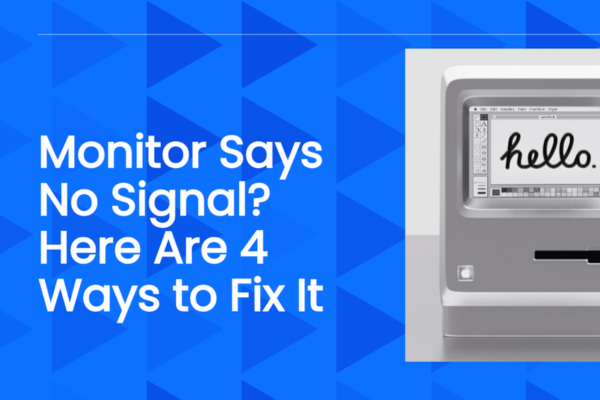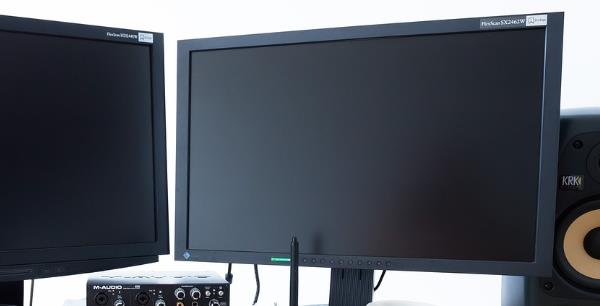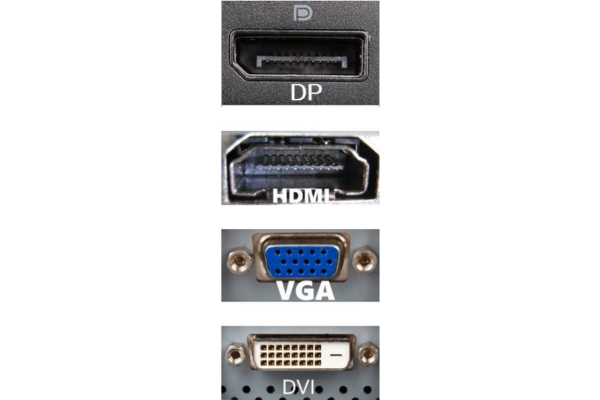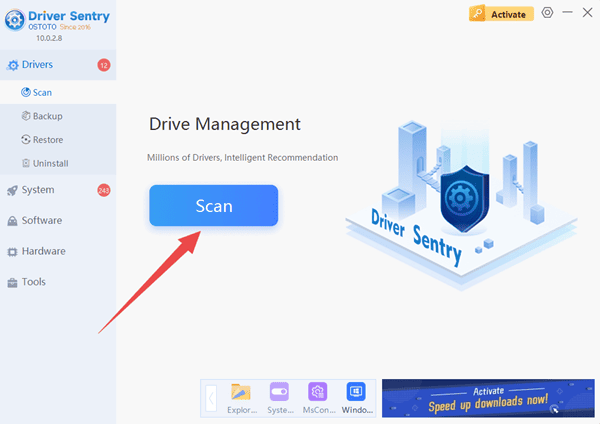Have you ever turned on your computer, only to be greeted by a blank screen with the words "no signal" staring back at you? It's a frustrating experience that can leave you scratching your head, wondering what went wrong. If your monitor says no signal, don't panic. You can take several steps to resolve the issue. In this blog post, we'll walk you through four common solutions to get your monitor up and running again.

4 Ways to Fix Monitor Says No Signal Issue
1. Check Your Cables
The first and most obvious thing to do when your monitor says no signal is to check your cables. A loose or damaged cable can prevent the signal from getting from your computer to your monitor. Here's what you need to do:
Inspect the Connection: Make sure both ends of the video cable (VGA, DVI, HDMI, or DisplayPort) are firmly plugged into your computer and monitor. Unplug and replug the cables to ensure a secure connection. Sometimes, a cable can come loose over time, especially if your computer or monitor has been moved recently.
Check for Damage: Look for any signs of damage on the cable, such as frayed wires or bent connectors. If you notice any damage, it's best to replace the cable with a new one. A damaged cable can cause intermittent or no signal screen issues.
Try a Different Cable: If you have another compatible cable on hand, try using it to connect your computer and monitor. This can help you determine if the problem lies with the cable itself. If the new cable works, then you know your original cable was the issue of your computer screen no signal.

2. Select the Correct Input Source
If your cables are in good condition and properly connected, the next thing to check is the input source on your monitor. Monitors often have multiple input options, and if the wrong one is selected, you'll see the "no signal" message. Here's how to select the correct input source:
Identify the Ports: First, determine which port on your computer you're using to connect to the monitor (VGA, DVI, HDMI, etc.).
Access the Monitor Menu: Press the menu button on your monitor. This is usually located on the side or bottom of the monitor. Use the arrow buttons on the monitor to navigate through the menu.
Find the Input Source Option: Look for an option like "Input Source," "Source Select," or something similar. Select it.
Choose the Correct Input: From the list of available input sources, select the one that corresponds to the port you're using to connect your computer. For example, if you're using an HDMI cable, select "HDMI" as the input source.

3. Check Your Graphics Card
If you have a dedicated graphics card in your computer, it could be the cause of the "computer screen no signal" problem. Here are some things to check:
Make Sure It's Properly Installed: Turn off your computer and unplug it from the power source. Open the computer case and locate the graphics card. Make sure it's firmly seated in its slot. If it looks loose, gently push it back into place.
Check for Overheating: Overheating can cause a graphics card to malfunction. Verify whether the fans of the graphics card are rotating. If they're not, or if the card feels unusually hot, there may be a cooling issue. You can try cleaning the fans and heatsinks to improve airflow.
Update the Graphics Driver: An outdated or corrupt graphics driver can also cause the monitor to show no signal. PcGoGo Driver Sentry is a powerful tool that can scan your system for outdated drivers and update them with just a few clicks. Here's how to use it:
Download PcGoGo Driver Sentry from the official website and then install it.
Launch the program and click the "Scan" button. PcGoGo Driver Sentry will scan your system and identify any outdated or problematic drivers, including your graphics driver.
Once the scan is complete, click the "Update" button next to the graphics driver to download and install the latest version.
Restart your computer after the update to apply the changes.

4. Test with Another Monitor or Computer
If you've tried all the above steps and your monitor says no signal, it's time to do some further testing.
Try Another Monitor: Connect your computer to a different monitor. If the other monitor works fine, then the problem is likely with your original monitor. You might have to reach out to the manufacturer for additional help or think about obtaining a new monitor.
Test with Another Computer: If possible, connect your monitor to a different computer. This can help you determine if the problem is with your computer or the monitor. If the monitor works with the other computer, then there's likely an issue with your original computer, such as a problem with the graphics card or motherboard.
Conclusion
Monitor says no signal can be a frustrating problem, but it's usually fixable. By checking your cables, selecting the correct input source, ensuring your graphics card is working properly, and testing with other devices, you should be able to identify and resolve the issue. And don't forget about PcGoGo Driver Sentry, which can be a valuable tool in keeping your system's drivers up-to-date and preventing problems like this from occurring in the future. So, the next time you're faced with a "no signal screen", give these methods a try and get back to using your computer as normal.